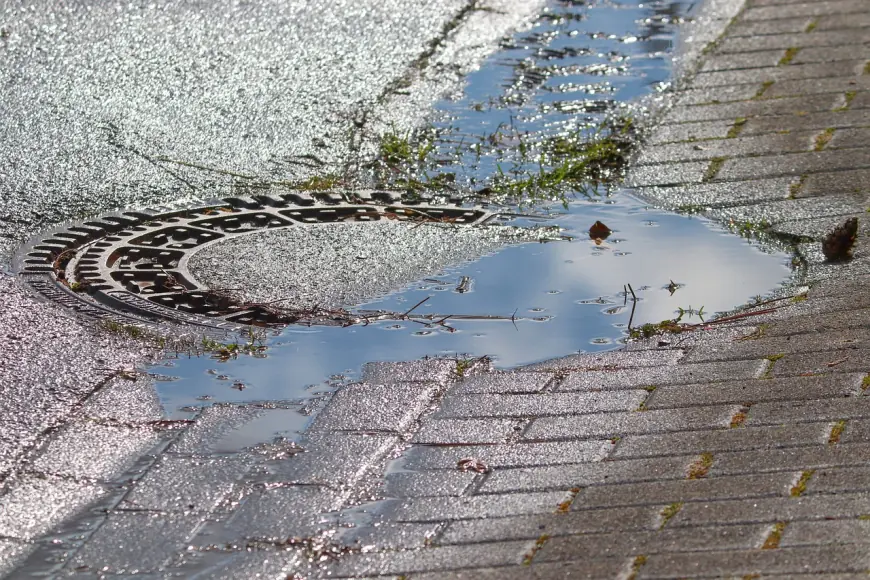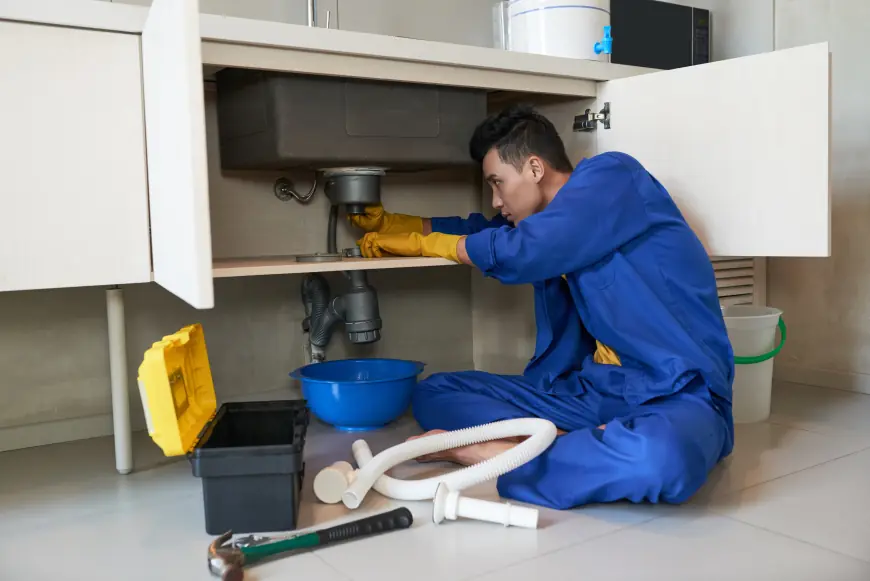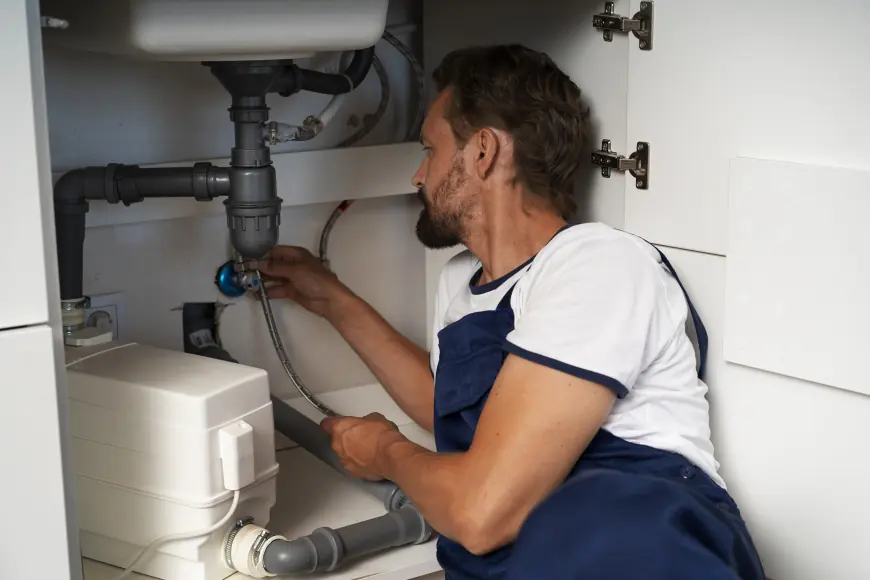Emergency Steps to Take When Your Drain is Completely Blocked
Discover essential emergency steps to take when your drain is completely blocked. Learn quick and effective solutions to prevent further damage and restore water flow.

Just about every homeowner in Australia can relate to the frustratingly common issue of blocked drains. It's an experience that not only disrupts the normal daily routine but can also lead to significant property damage if not addressed promptly. When water can't find its way through our plumbing system, it can quickly overflow and cause structural damage to our homes.
Understanding the potential problems, recognising the urgency, and most importantly, knowing how to respond, can save us from severe damage and hefty repair bills. A blocked drain doesn't necessarily need to spell disaster. With a quick response from a well-informed homeowner, it can be a minor glitch.
Even though professional plumbers are always an option, sometimes the problem can be efficiently handled with some basic household tools and a pair of willing hands. A swift response reduces the risk of water damage and prevents a small issue from becoming a significant plumbing problem. Our guide will help you understand, prevent, and handle a blocked drain effectively.

Recognising and Identifying the Signs of a Blocked Drain
But how do we identify a blocked drain? Often, we assume that everything is fine until a visible problem occurs. However, drains give several warning signs before succumbing to a blockage. Being conscious of these symptoms can help homeowners address issues before they escalate.
A slow or sluggish drain is one of the most straightforward signs of an impending blockage. If water isn't draining away as quickly as it usually does, chances are there's a blockage building up in the pipes. Other signs include unusual sounds from drains, like gurgling noises, and unpleasant odours that seem to emerge from drains. If you observe one or more of these signs, it's a clear red flag.
It's essential to recognise the difference between a normally functioning drain and a potentially problematic one. A typical drain will remove water quickly, efficiently, and quietly with no odours. Anything contrary to this can indicate a problem in the making. Honour these signs and react swiftly to prevent larger issues down the line.
Understanding The Potential Causes of Drain Blockages
Blocked drains don't occur without reason. Numerous factors can contribute to a drain becoming blocked. Recognising these causative factors can help you prevent blockages and maintain healthy drains. Among the most common causes are kitchen waste such as cooking grease and food particles, as well as bathroom waste including hair, soap residue, and too much toilet paper.
However, it's not always what we put down the drain that causes blockages. External elements like tree roots can also invade our pipes and cause severe blockages. Tree roots, attracted by moisture, can sneak into small cracks or joins in the pipes, expanding over time and eventually causing a block.
Ignoring a drain blockage isn't an option. When left untreated, it can lead to serious issues like pipe damage, leakages, and even major structural damage due to overflowing water. That's why it's essential to react promptly when you notice any signs of a blockage.
Initial First Aid For a Blocked Drain
The initial response to discovering a blocked drain can significantly influence the final outcome. Once you identify symptoms of a blocked drain, the first crucial step is to switch off the water mains to prevent more water from entering the blocked section of the pipes and potentially causing a damaging overflow.
Having the necessary tools handy is crucial when it comes to tackling blocked drains. Plumbing tools like a plunger, hand auger, and plumber snake are fantastic allies in resolving drain issues. This proactive measure saves time and aids in swift action when drain issues arise.
Before you set to work, assess the situation. Understand where the blockage might be coming from, which drain is affected, and what materials you might be dealing with. This initial assessment will guide your action steps and help you resolve the blockage effectively.
Weapons in Your Arsenal: Tools Needed for a Blocked Drain
When it comes to tackling blocked drains, certain tools can be incredibly helpful. A plunger is the first weapon of choice for a homeowner dealing with a stubborn blockage. It's simple to use and can remove a clog effectively without causing any harm to your pipes.
In situations where a plunger isn't sufficient, a hand auger or a plumber snake can be helpful. These tools can break up tough blockages, even those further down the pipes, and clear the way for water to flow freely again. Other handy tools include a wrench, plastic bucket, rubber gloves, and a water hose for cleaning up afterwards.
While a well-stocked tool box is great, it's equally important to know which tool to use when. For example, if the blockage is due to hair or kitchen waste, a plunger might do the job. But for more severe clogs, a plumber snake or hand auger might be necessary.

Step-by-Step Guide: Unblocking Your Drain
Unblocking a drain isn’t rocket science. With the right tools and guidance, you can effectively clear a drain. Start by placing the plunger over the drain and gently push down to create a seal. Once sealed, the forceful up and down motion helps to dislodge the blockage.
If the plunger fails to unclog the drain, use a plumber snake or hand auger. Here, the goal is to reach deep into the pipe and break up or extract the blockage. Knowing how far to uncoil the device is essential. Too much force can damage the pipes while too little force might not be effective.
Remember to always wear protective clothing, like gloves, to protect yourself from debris and filth that may be expelled from the drain during the unblocking process. After successfully breaking up the blockage, rinse the drain with warm water to push any loose debris through the system.
Calling in the Experts: When to Seek Professional Help
While clearing a drain is often manageable at home, there are times when the issue is beyond our control. Stubborn blockages that persist after attempting to remove them, or issues that recur, are indications that professional help may be necessary.
Additional indicators are slow-draining sinks or toilets despite efforts to clear the drains, or if multiple drains are blocked at the same time, suggesting a major blockage in the main pipe. It is also essential to call a professional if the blockage is due to external elements like tree roots, as working on such issues without expertise can cause more harm than good.
When seeking a professional, prioritize licensed and bonded experts with a good reputation, to ensure quality work. When explaining your issue, ensure you provide all the details observed, tools used, and any previous instances of blocked drains. This information will help the plumber to understand the situation better.
Conclusion
In conclusion, addressing a blocked drain proactively can save you from potential water damage and costly repairs. By learning to identify the early warning signs, understanding the causes of drain blockages, and mastering the art of drain clearing, you can quickly become the household hero when it comes to tackling blocked drains.
Utilising your toolbox efficiently, knowing when to call in the professionals, and adopting preventative measures can go a long way in keeping your drains clear and running smoothly.
Remember, swift action is crucial when dealing with a blocked drain. The quicker you react, the lesser the potential problem. Being conscious about your waste disposal habits and regularly checking your drains for strange noises, smells, or slow drainage can save the day, and the drain!

 katiemoroney
katiemoroney 










